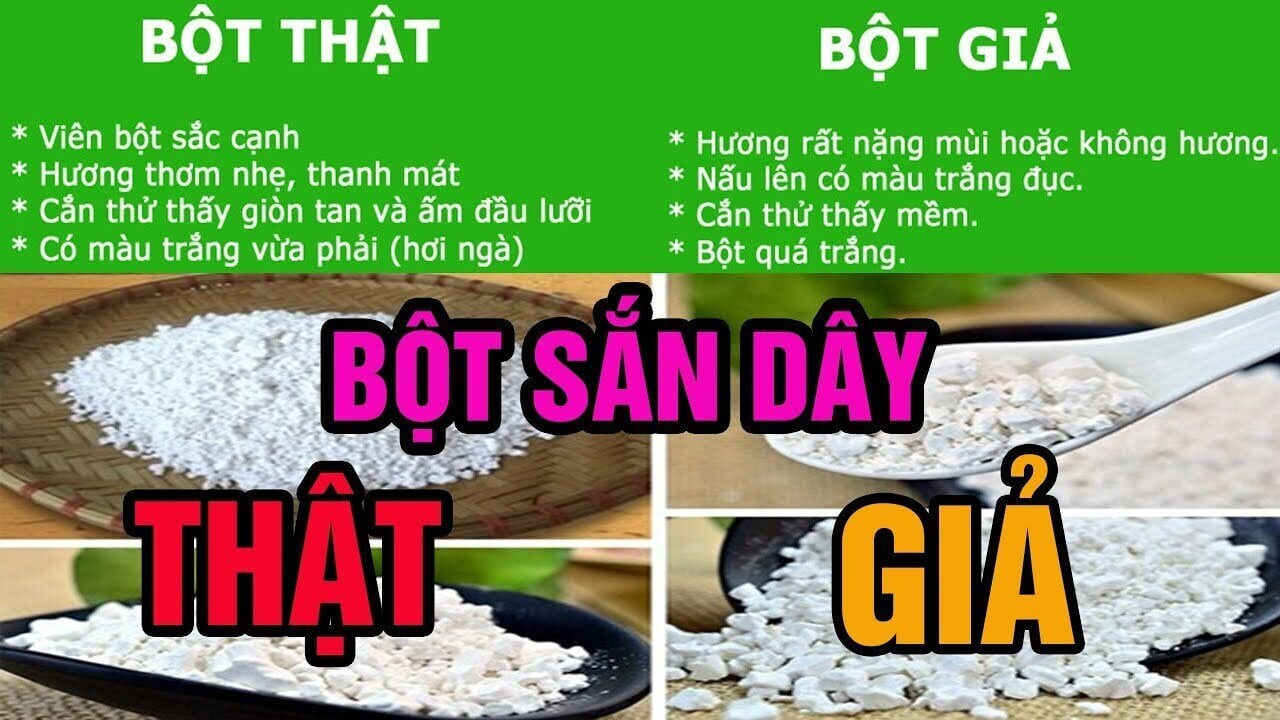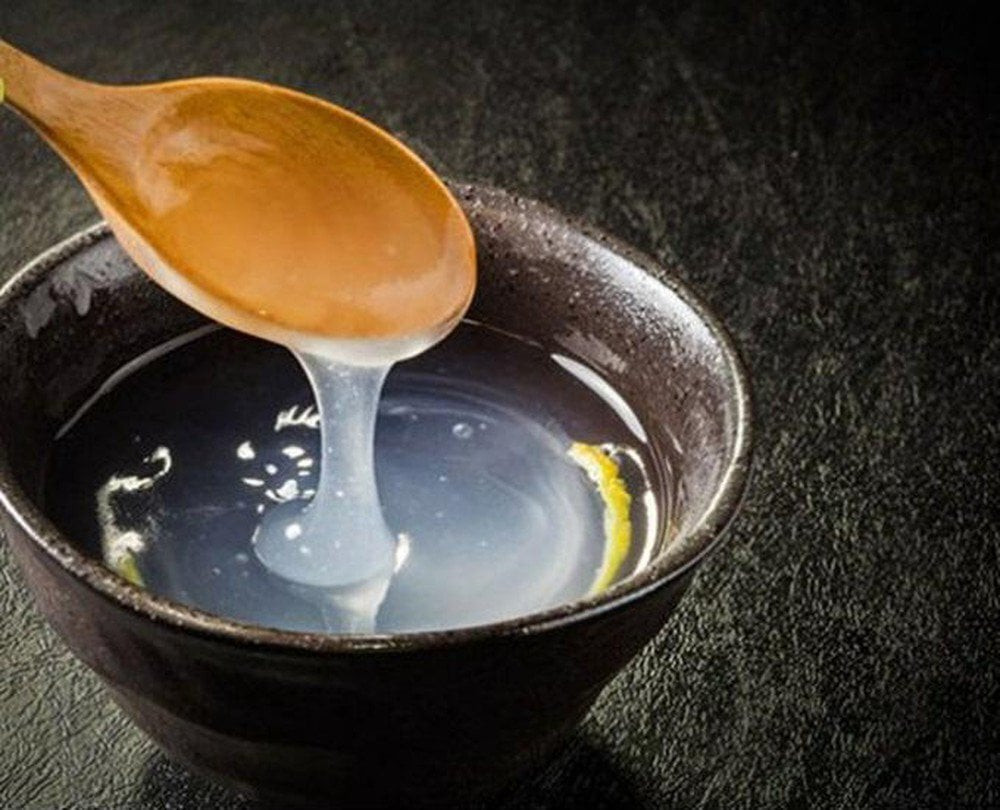Tasting, smelling or mixing tapioca starch with water… are ways to help you distinguish between real and fake tapioca starch, pure or mixed tapioca starch.

Arrowroot powder has the effect of cooling, detoxifying, very good for health, so the demand for consumption is quite large, especially in the summer. Therefore, on the market there are many fake, poor quality, mixed arrowroot powders.
Before buying, you can identify whether the tapioca starch product is good or not in extremely simple ways.
Recognize fakes with the naked eye
Real tapioca starch is a type of starch with large, sharp grains, pure white in color, with a characteristic natural aroma; the powder is dry, not moist. When you put it in your mouth to bite, real tapioca starch is crispy, melts quickly in your mouth and you feel warm on the tip of your tongue.
After the tapioca starch dissolves, our tongue will feel the smoothness and no sand.
As for fake tapioca starch, mixed with many impurities, the powder balls are not sharp, the grains are small, do not have the natural white color or aroma of tapioca starch, and when bitten, the powder balls feel soft.
Distinguish real and fake tapioca starch by mixing it with water
You put a little tapioca starch into a cup of water, then pour the water into another cup. If you see the water is drained cleanly, there is no residue at the bottom of the cup, then it is completely pure powder.
If you have more time, you can put the whole cup of dissolved tapioca starch in the refrigerator. After 3-5 hours, the powder will settle to the bottom of the cup. Pour out the water, you will see that the powder is very difficult to pry up and has an absolute white color like when the powder is dry, that is the standard and genuine powder.
Distinguishing real and fake tapioca starch by heating

Take about 3 spoons of tapioca starch, 1 bowl of water, 3 spoons of sugar, dissolve the above mixture, then put it on the stove and cook for 10 minutes, stirring constantly while cooking. When the powder is cooked, pour it into a bowl, if you see the powder is clear to the bottom, then this is definitely quality tapioca starch.
Taste perception
The simplest way is to mix two types of tapioca starch into two separate cups and try drinking them. The quality type of starch will definitely taste better and have the characteristic aroma of tapioca starch. Poor quality starches often have a strange taste, a musty smell or are not fragrant.
Olfactory recognition
When buying tapioca starch, you should not choose the type of starch that has been soaked in pomelo flowers because it is very easy to get moldy, or this is a fake product so the seller soaked in pomelo flowers to cover up the smell. You should buy very dry and crispy starch so that it can be stored for a long time.
Notes when using tapioca starch
- Drink cooked cassava starch:Drinking raw kudzu is still good for your health. However, kudzu is very cold, so people with weak constitution or bad stomach may have stomachache or diarrhea.
- Do not drink too much tapioca starch in one day:Kudzu powder has a lot of starch. However, it also contains a lot of saponins and a flavonoside called puerarin, if used too much can also have negative effects on the body.
-Don't use too much sugar:When mixing cassava starch, many people add sugar to make it more delicious; but too much sugar can cause kidney disease and diabetes.
TB (according to VTC)